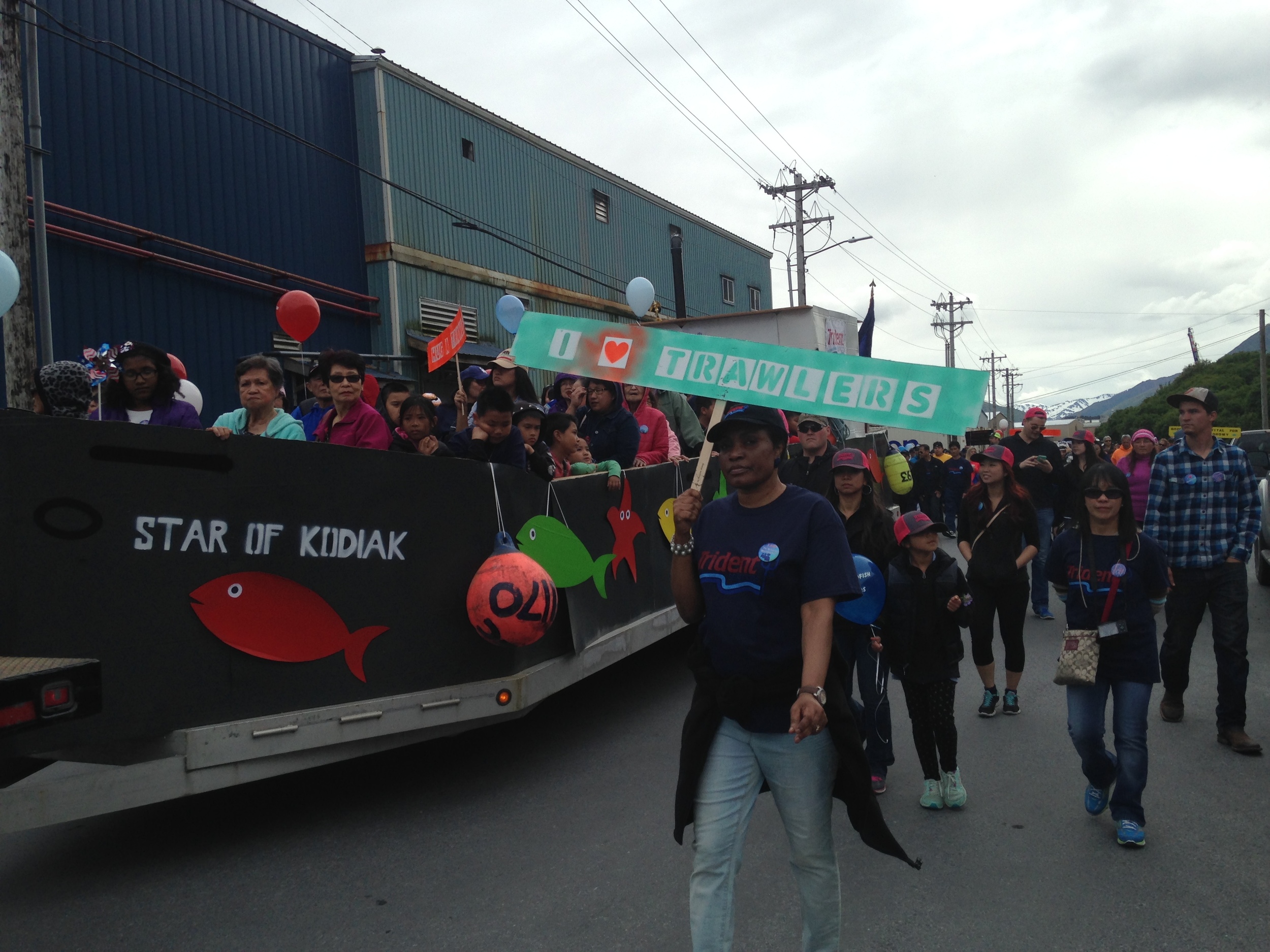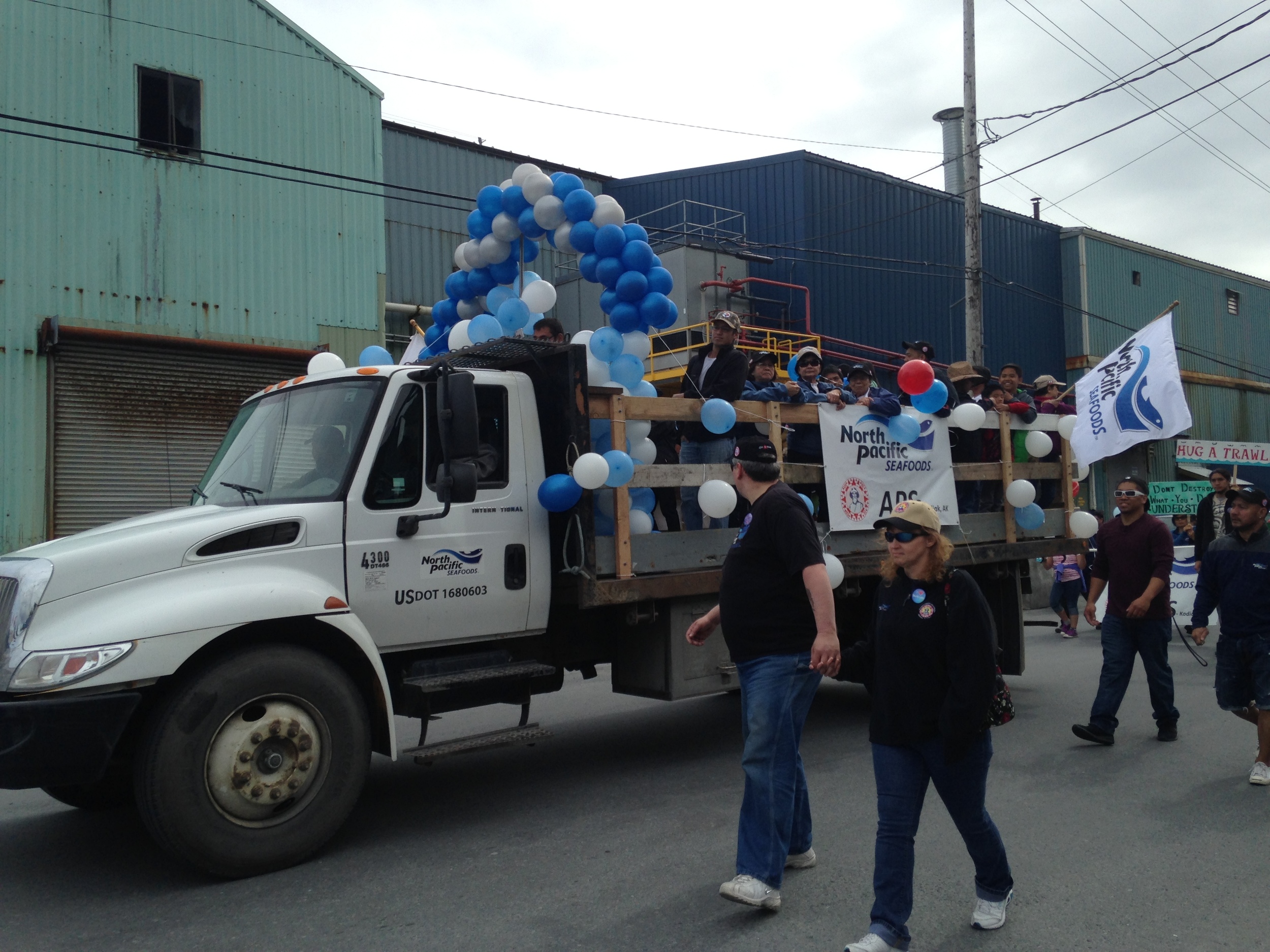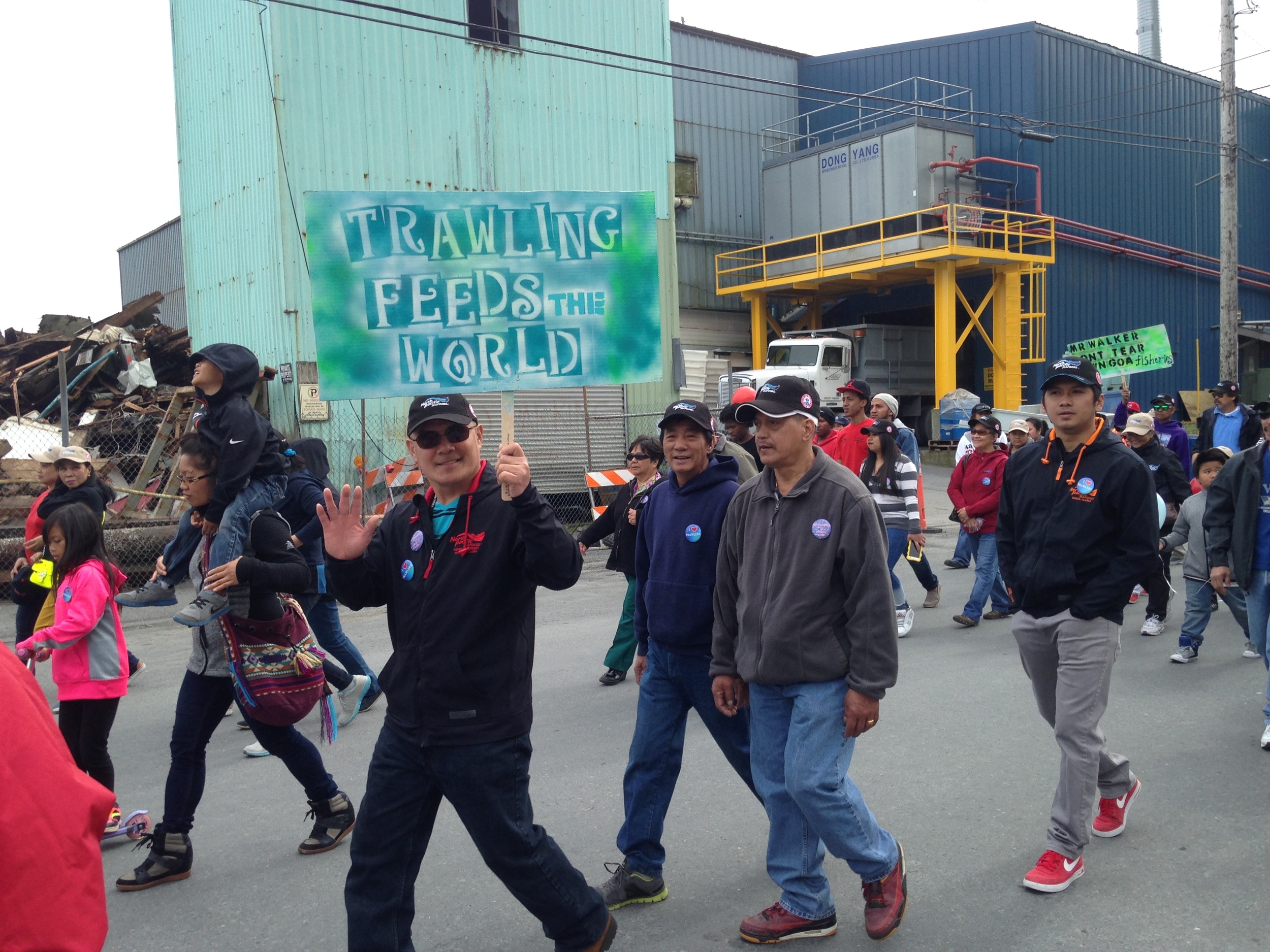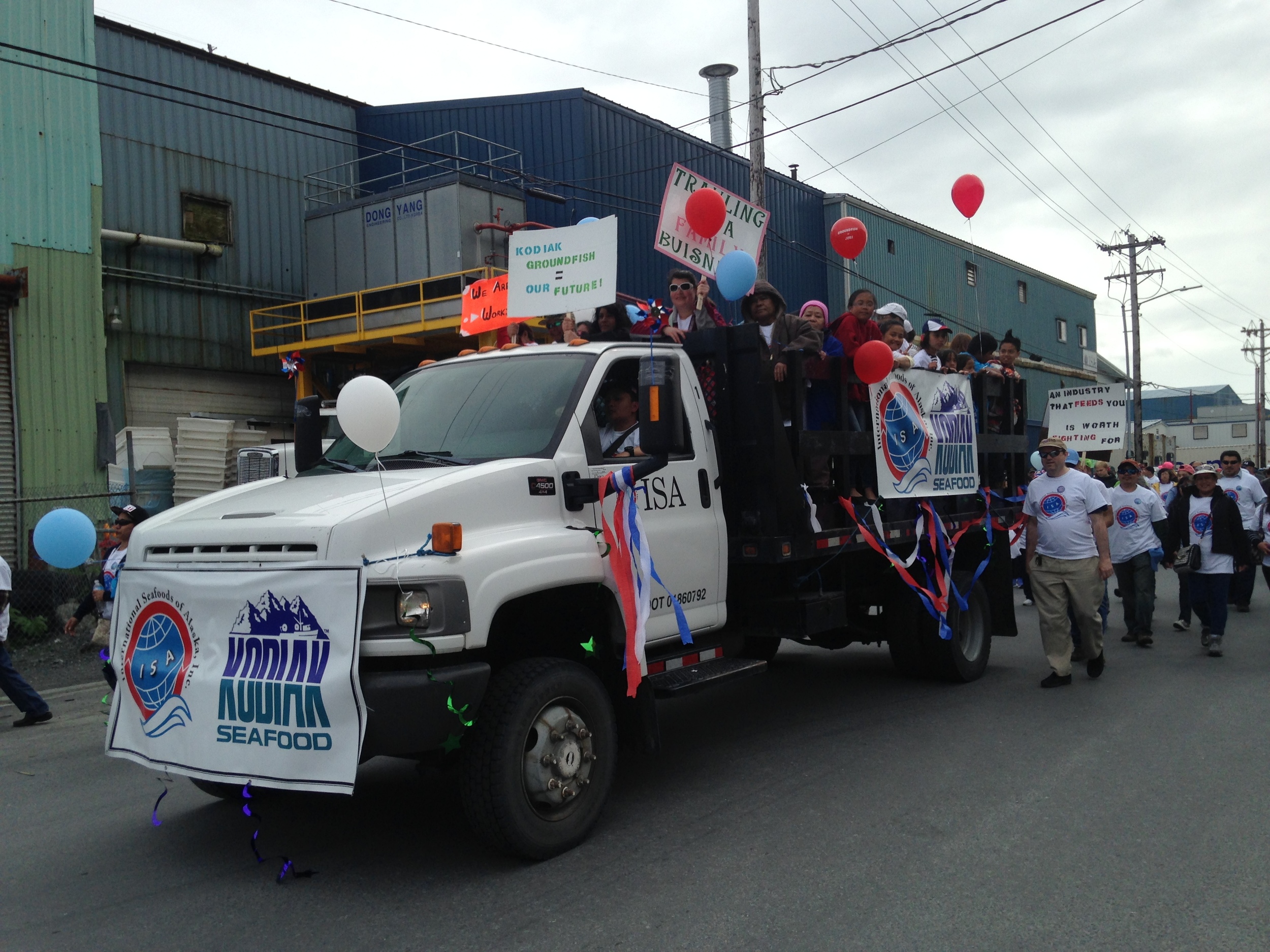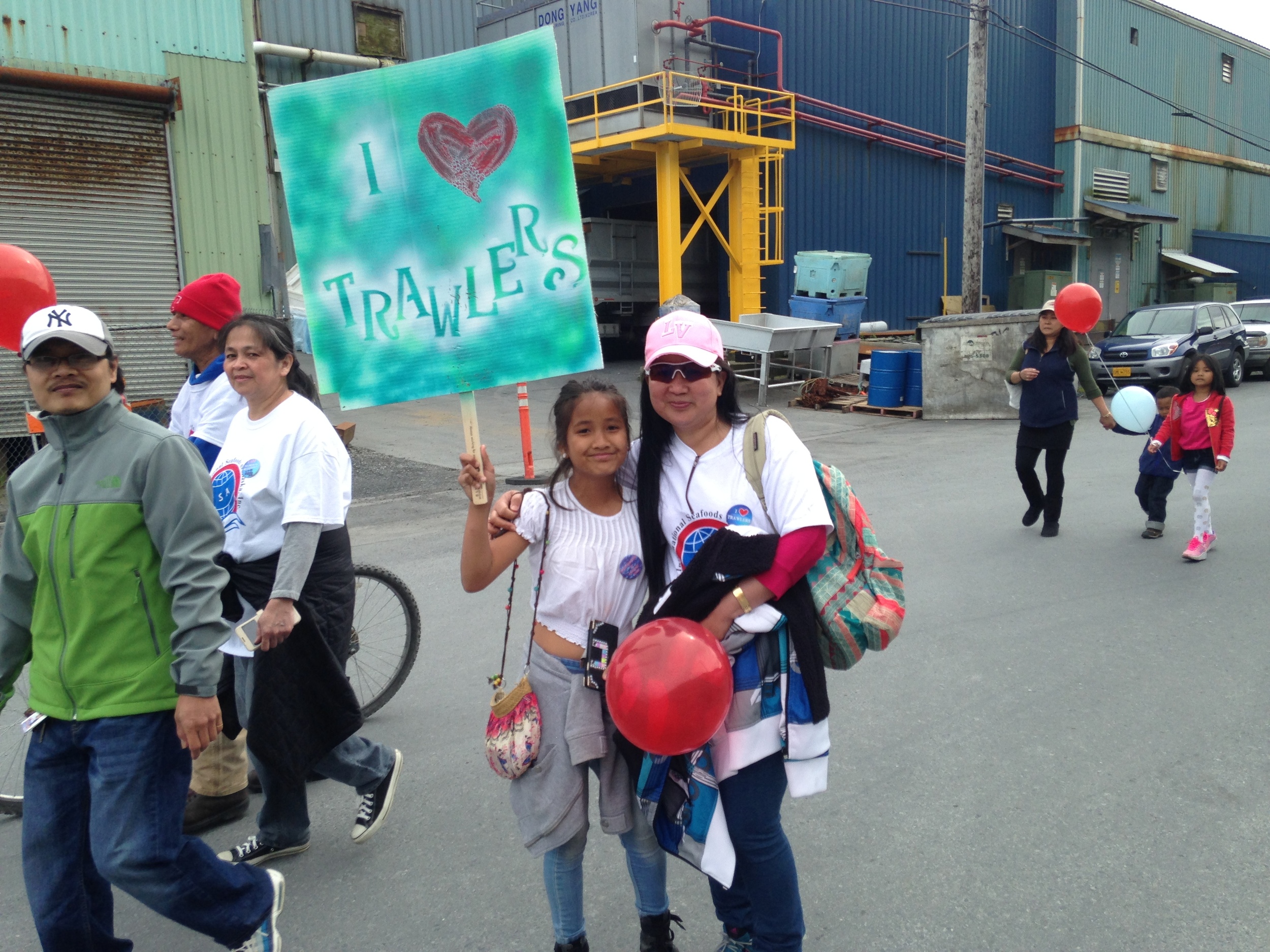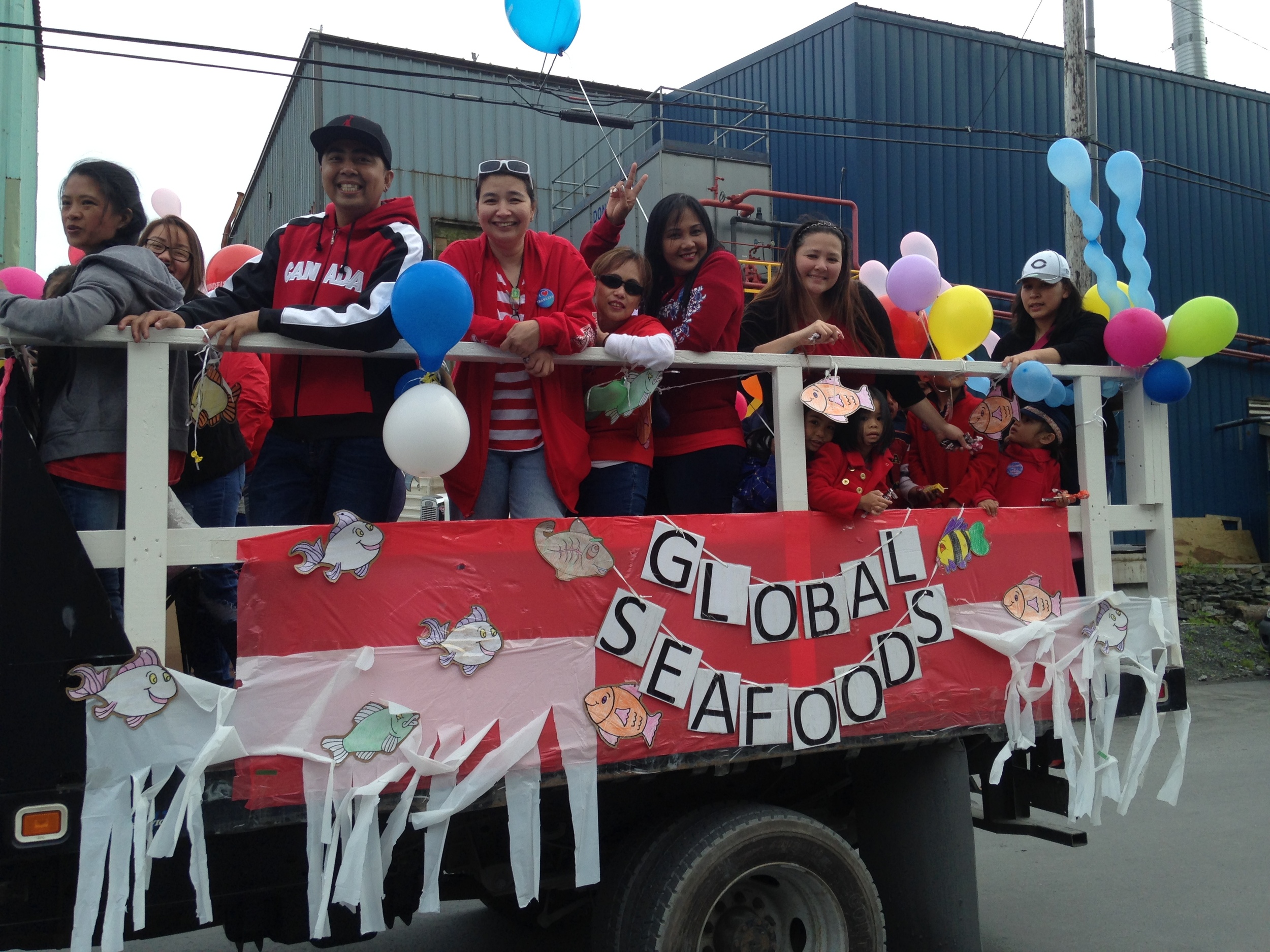Note: An edited version of the article below was published in the September issue of Pacific Fishing. The parade was highly controversial in Kodiak and inspired serious ire in many. The impressive participation on the part of local processing workers is what caused much of the anger. Some of the upset individuals felt that the processing workers were unwittingly being used for political purposes.
Local media barely reported on the event, even though over 1/3 of Kodiak city residents participated. The Kodiak Daily Mirror ran three photos without an article, and KMXT didn't report on it, at all. [When questioned about this, KDM said they didn't have a reporter assigned to the story and the news director at KMXT basically said he didn't want to attend the parade.]
As a historian, I spend considerable time looking for news stories that document the experiences of minorities both within the community and within the seafood industry. Let me tell you--- it's hard to find information on Kodiak's Asian community, even though the population of Asians and Whites has been close to on par since the 1990s. This is upsetting. But then an event like this Groundfish Parade occurs, one in which a significant number of Asians participate, and there is minimal media coverage. This is exactly why it's so hard to locate historical information on local Asians. In my mind, this lack of coverage is symptomatic of the racial segregation within Kodiak and, perhaps, anti-trawl bias within the local media.
Wearing a red baseball cap that read, “Make Trawling Great Again,” Trident CEO Joe Bundrant threw a chocolate pie in the face of North Pacific Fisheries Management Councilmember Duncan Fields at the end of the Groundfish Parade in Kodiak on June 11. In an effort to raise money for charity (and a harmless way to exact a bit of fun revenge on fisheries political opponents), others like Joe Plesha, General Council of Trident Seafoods, got a face full of whipped cream and graham cracker crust. The event was organized by the Alaska Whitefish Trawlers Association and Groundfish Data Bank.
Now, this alone made the parade worth attending. But it is what occurred beforehand that made it a day for the history books. Marching behind a sign that read, “Save Kodiak’s trawl fishery/ we are the working waterfront,” over one thousand processing workers, trawlers and their supporters paraded from Fishermen’s Terminal, passing the processing plants along Shelikof Street, and stopping in front of the Kodiak Island Convention Center, within which the North Pacific Fisheries Management Council was meeting.
Within, the Council deliberated the alternatives presented to reduce bycatch in the Gulf of Alaska. Outside, the typically invisible processing workers came out of the corrugated metal buildings in which they labor. Within, jargon proliferated (“how to address sideboards for non-exempt AFA CV’s?”). Outside, Tagalog and Spanish were as common as English. Within, a group of white middle-aged men and one woman heard testimony about observer coverage and the impact of monetizing groundfish quota in the Gulf. Outside, hundreds of Asian Americans and Latinos walked with their families, holding signs like “Governor Walker don’t take away my job.”
An economic report recently commissioned by the Kodiak Island Borough illustrated that in 2014, 1952 jobs in Kodiak were derived from groundfish, more than all other locally-executed fisheries combined. Yet economic prowess does not indicate that all trawlers boast of their occupation around town. During the Groundfish Parade, the town’s trawlers unabashedly displayed their affiliation. A makeshift float within the parade included an ATV with a handmade cardboard sign attached to it reading, “We are trawlers and proud of it.” Parade participants wore buttons that said “I Heart Trawlers.” This is an incongruous sight in Kodiak, where vocalized public support of the trawl industry happens as often as a stretch of sunny weather in February.
Rallying to maintain trawl-landings in Kodiak and the subsequent access to work and overtime pay brought some of the plant workers out to the parade. The door prizes and free meal enticed others to take part. Those who participated in the parade were given tickets for door prizes; Glenn Reed of the Pacific Seafood Processors Association called out the winning numbers. Kids prizes included new bikes; adults hoped to receive a big screen television or plane tickets. “We are in the community, we do what we can to make a living,” said a Latino processing plant worker named Roman as he awaited the next round of door prizes.
As bigwigs in the Alaska fishing industry tried to outbid one another to fling a pie in the face of Glenn Merrill of NMFS, I hoped that none of them would beat out the minimum wage earning processing workers for the good door prizes.
Looking ahead at the hundreds of people who stood between her and the Filipino pancit and pollock burgers, a woman said, “If there isn’t enough I’ll just go to McDonalds.” One of the signs in the parade read, “Trawlers feed the world.” Indeed, the Filet-o-Fish available up the road at McDonald’s could have been landed at Kodiak and processed by one of those in line.
Two thousand plates of food were served at the end of the parade. The organizers succeeded in demonstrating that trawlers do feed and fuel Kodiak’s working waterfront. Yet, the quality of that meal depends mightily on where one sits at the table. Moreover, until the NPFMC takes action, bycatch in the trawl sector will continue to impact the stability and growth of other fisheries, affecting others abilities to feed themselves.


